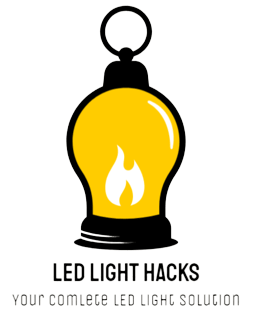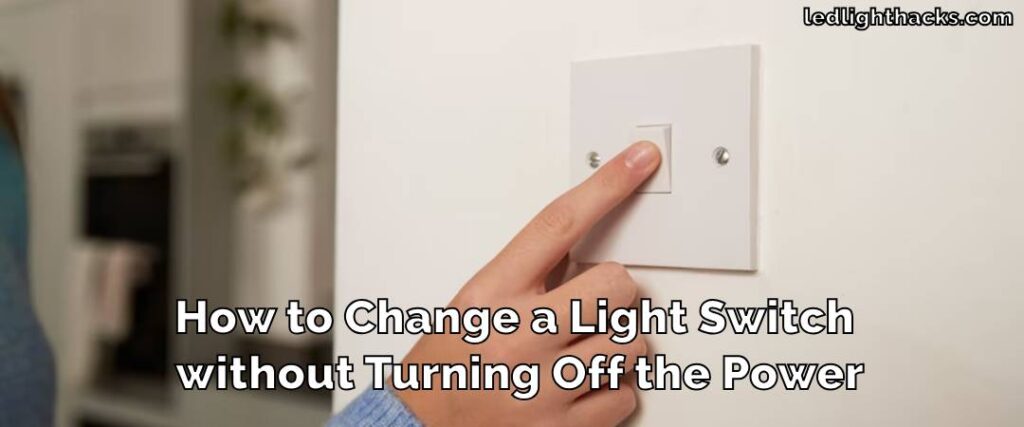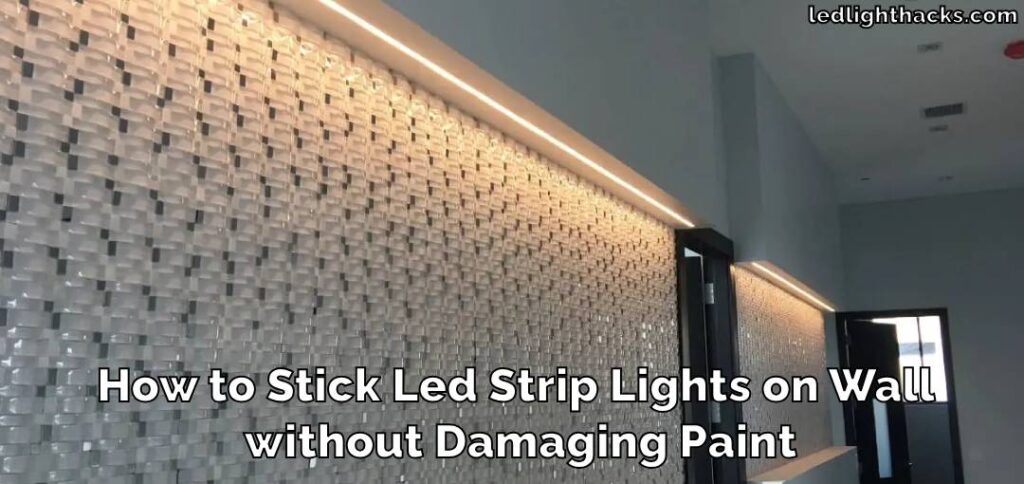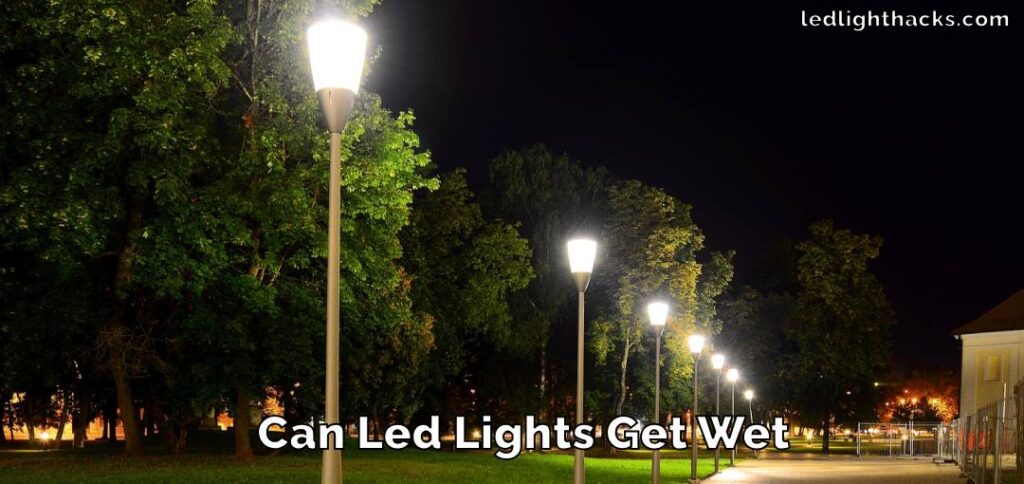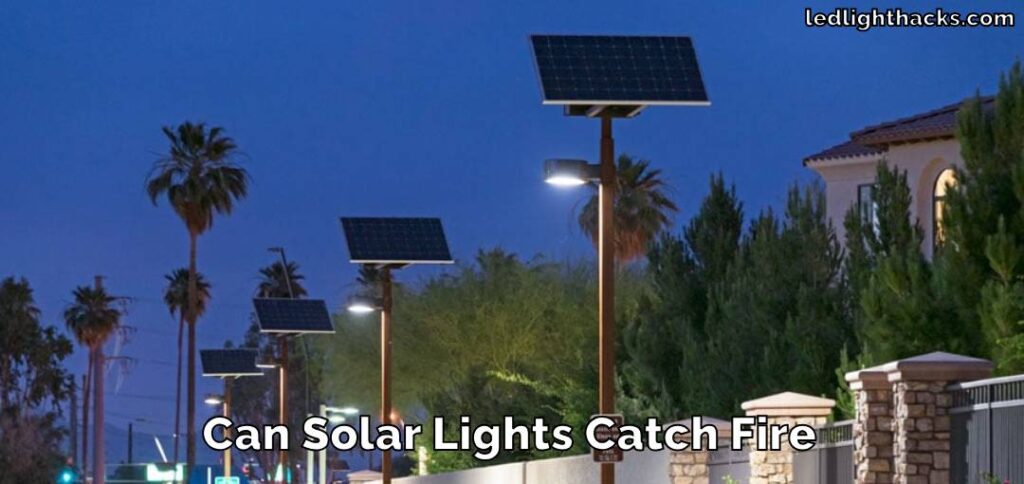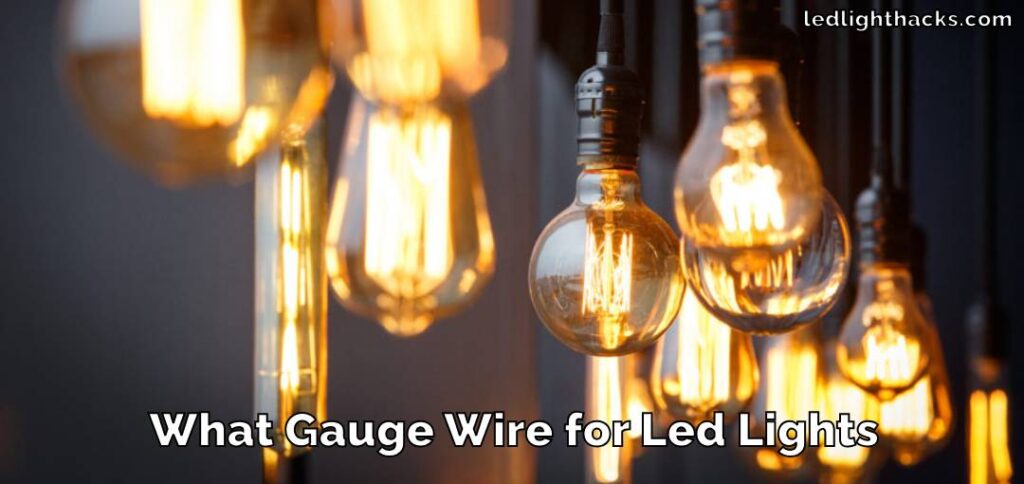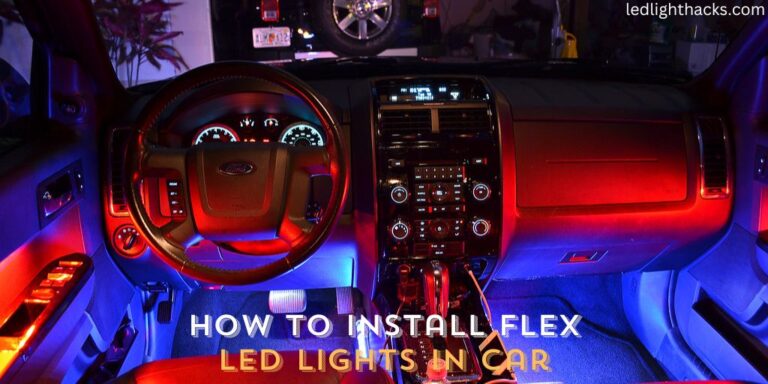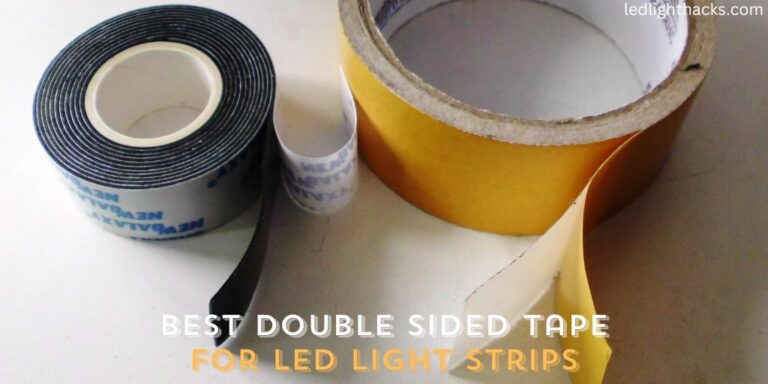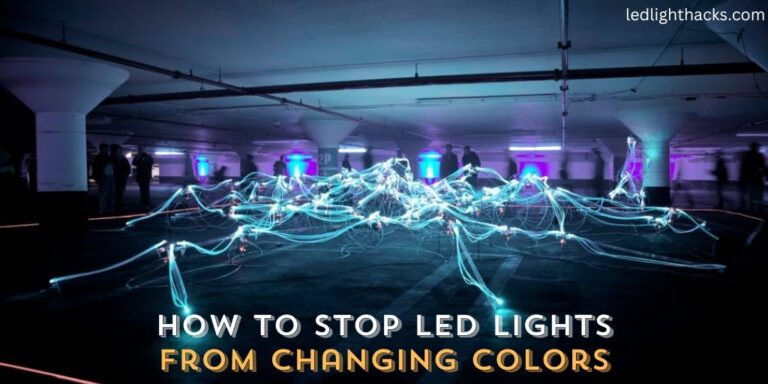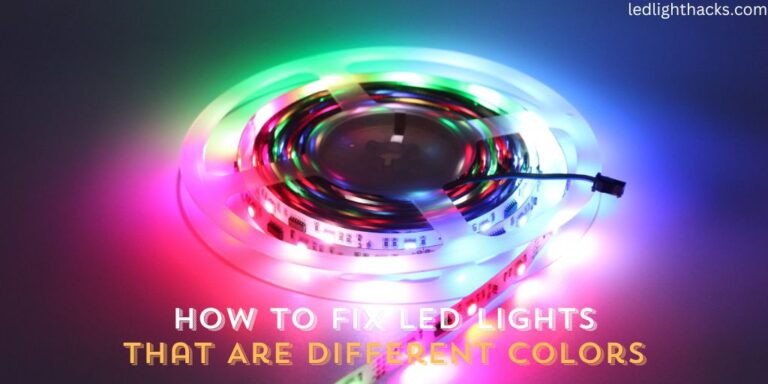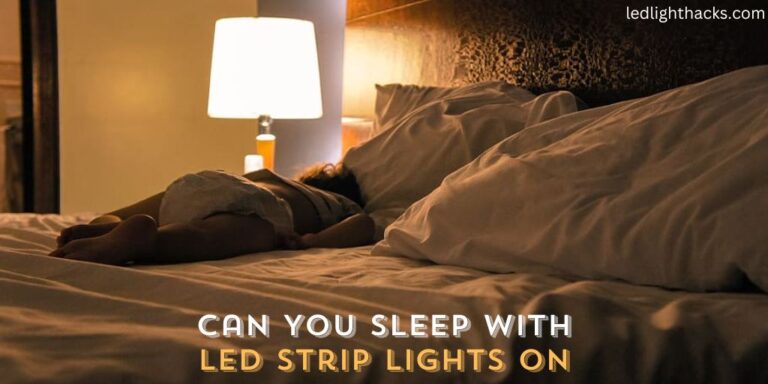How to Dispose of LED Light Strips
As we all become more conscious of our environmental footprint, figuring out the right way to dispose of electronic products has become crucial. LED light strips are a perfect example. They’re loved for their energy efficiency and flexibility, lighting up spaces from homes to offices. But when it’s time to get rid of them, many of us hit a wall: How do we do it properly?

The key is to dispose of LED light strips in a way that doesn’t hurt the planet. This means being careful not to just throw them in the trash where they can end up causing harm. These light strips contain materials that should be recycled to both protect the environment and make the most of their valuable parts.
This guide is here to help. We’ll walk you through a simple, step-by-step process on how to dispose of LED light strips. With clear instructions and a list of what you’ll need, we aim to make it easy for anyone to play a part in building a more sustainable future. Let’s dive into how you can dispose of your LED light strips the right way.
Why You Should Dispose of LED Light Strips
While LED light strips are celebrated for their low energy consumption, it’s vital to consider the environmental impact they could have if not disposed of properly. These strips are more than just light sources they are complex electronic devices containing small but significant amounts of metals like lead and mercury.
These heavy metals, if left in landfills, can seep into the ground, potentially contaminating soil and water sources. This contamination poses a risk not just to the environment but also to human health.
Moreover, LED strips consist of various recyclable components. By ensuring these parts are properly recycled, we contribute to reducing waste. Recycling helps recover valuable materials that can be reused, thereby lessening the demand for new resources.
This process is not only beneficial for the environment but also economically advantageous as it conserves resources and energy required to produce new materials from scratch.
Responsible disposal and recycling of LED light strips also play a part in decreasing the overall carbon footprint of our consumer habits. The production of new electronic components involves significant energy consumption and greenhouse gas emissions.
By recycling, we ensure that the lifecycle of the materials used in LED strips is extended, reducing the need for new production and thus contributing to a reduction in overall environmental impact.
Tools Needed to Dispose of LED Light Strips
When preparing to dispose of LED light strips, it’s essential to have the right tools at hand. This not only makes the process smoother but also ensures your safety. Here’s a list of basic tools and information you’ll need to start:
- Safety Gloves: To protect your hands from any sharp edges or harmful substances, always wear safety gloves.
- Screwdriver or Pliers: These will help you remove the LED strips from their installed location or detach any parts that need separate disposal.
- Recycling Bin or Container: Have a dedicated bin or container ready to collect the LED strips and their parts, keeping them separate from other types of waste.
- Local Recycling Facility Contact Information: It’s important to know where you can take the LED strips for recycling. Contact your local recycling facility beforehand to confirm they accept electronic waste like LED strips.
Gathering these tools before you start ensures that the disposal process of your LED light strips is not only effective but also adheres to safety and environmental standards.
Remember, the goal is to dispose of these strips in a way that is safe for you and beneficial for the environment. By being prepared with the right tools and information, you’re taking a responsible step towards sustainable living.
How to Dispose of LED Light Strips (10 ways)
Disposing of LED light strips properly is super important for keeping our planet healthy. Since they’re electronic, you can’t just throw them in your regular trash like you would with everyday waste. Here’s how you can do it the right way:
1. Check with Local Waste Management
Begin by contacting your local waste management authority. They are the best source of information on how to properly dispose of LED light strips in your specific area. Since disposal regulations can differ from one place to another, getting this local advice is crucial.

They can tell you if there are special facilities or specific days when you can dispose of electronic waste like LED strips.
2. Find a Recycling Center

Look for a local recycling center that accepts electronic items. Many towns and cities have specific spots where you can drop off electronics for recycling. These places know exactly how to handle and recycle different materials, including LED strips.
3. Prepare for Recycling
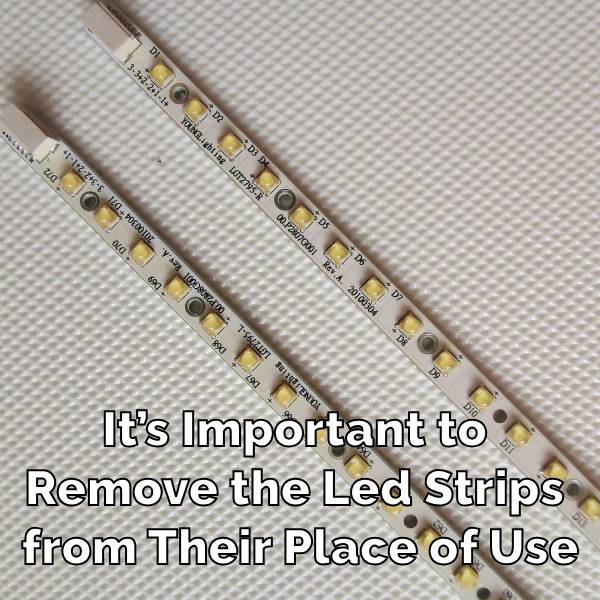
Before you take your LED strips to be recycled, make sure they’re in a condition that’s safe for transport. If they have a battery pack or any other removable parts, take those off. This helps the recycling center process them more easily.
4. Separate Components
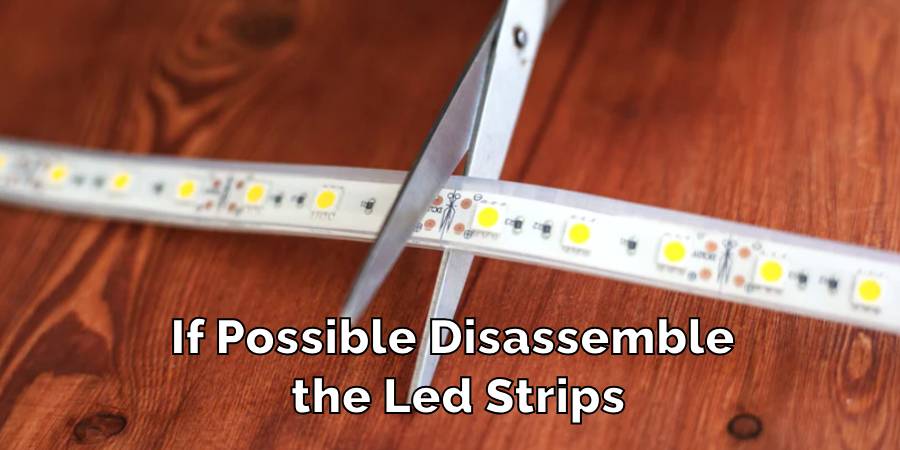
If possible, disassemble the LED strips. This means separating the different materials they are made of, such as metal, plastic, and electronic parts. By doing this, you make it easier for the recycling center to process each material correctly. This step is especially helpful if your recycling center requires materials to be sorted before drop-off.
5. Use Retailer Take-Back Programs
Check if the store where you purchased your LED strips, or any local electronics store, offers a take-back program for used electronics. Many retailers provide this service as a way to ensure responsible disposal of electronic products. It’s a convenient option since you can return your used LED strips to a familiar location, often at no extra cost.
6. Participate in Community E-Waste Events
Keep an eye out for electronic waste collection events in your community. These events are organized specifically for the safe disposal of electronic items like LED light strips. They provide an excellent opportunity to ensure your electronic waste is handled properly, keeping harmful materials out of regular landfills.
7. Donate Functional Strips
If your LED light strips are still working, think about donating them. Schools, community centers, or other local organizations might benefit from them. This not only extends the life of the LED strips but also sustainably supports your community.
8. Sell to Scrap Dealers
LED strips contain parts, such as copper wires, that are valuable to scrap dealers. Reach out to local scrap dealers to see if they are interested in buying these components from you. This is a smart way to recycle useful materials and possibly earn a bit of money.
9. Utilize Mail-Back Services:
Some companies provide mail-back services for electronic waste. These services allow you to send your used LED strips to a facility that can dispose of them safely. Look for such services online, ensuring they accept LED strips, and follow their instructions for mailing your electronic waste.
10. Never Dispose of Regular Trash
You mustn’t throw LED strips in your regular garbage bin. Disposing of them with your regular waste can result in harmful substances being released into the environment. Always use one of the proper disposal methods mentioned to ensure environmental safety.
Remember, every little bit helps when it comes to recycling and taking care of our planet. By following these steps, you’re not just getting rid of something you no longer need; you’re also doing your part to ensure a healthier environment.
Precautions While Disposing of LED Light Strips
When it comes to disposing of LED light strips, it’s crucial to prioritize your safety and the safety of those around you. Here are some key precautions to keep in mind:
- Wear Protective Gloves: To protect your hands from any potential injuries, such as cuts from sharp edges on the LED strips, always wear protective gloves. This is a simple but effective way to avoid unnecessary harm.
- Work in a Well-Ventilated Area: LED light strips can sometimes release small particles or dust. To ensure you don’t breathe in these particles, carry out the disposal process in an area with good airflow. This could be outdoors or in a well-ventilated room.
- Be Aware of Local Regulations: Different areas have different rules about disposing of electronic waste. To make sure you’re not breaking any laws, familiarize yourself with your local regulations regarding electronic waste disposal.
- Avoid Direct Contact with Broken Strips: If any LED strips are broken, be extra cautious. Avoid direct contact with any broken parts, as they could contain small amounts of harmful substances.
- Handle With Care: LED strips can be delicate. Handle them gently to prevent breakage, which could release small, potentially harmful components.
- Keep Away from Children and Pets: Ensure that LED light strips are kept out of reach of children and pets both before and during the disposal process. This helps prevent accidental ingestion or injury.
By following these simple but important precautions, you can dispose of your LED light strips in a way that is safe for you and those around you. Remember, taking a few extra moments to dispose of these items properly can make a significant difference in maintaining a safe and healthy environment.
FAQ’s
Can You Scrap LED Strip Lights?
Yes, you can scrap parts of LED strip lights. The most valuable component is often the copper found in the wiring. Copper is a sought-after metal in the scrap industry. However, it’s important to note that not every part of the LED strip is as valuable as scrap. Plastic parts and some electronic components might not be worth much.
When scrapping, it’s a good idea to separate the valuable metals from the less valuable materials. This makes it easier for scrap dealers to process and recycle them. Remember to check with local scrap dealers to see what parts they accept and if there are any specific preparation steps you need to take.
Are LED Lights 100% Recyclable?
LED lights are not completely recyclable, but a significant portion of them can be reused or repurposed. The plastic casing, metal components, and some electronic parts can often be recycled. However, some elements of LED lights, such as certain types of electronic circuits, may not be recyclable with current technology.
This means that while you can recycle many parts of an LED light, some components might still end up as waste. It’s always a good idea to check with your local recycling center to see which parts of an LED light they can process.
What Do You Do with Excess LED Light Strip?
If you have extra LED light strips that you don’t need, there are several options for what to do with them. One option is to donate them to organizations like schools, community centers, or non-profits that might need lighting. Another option is to sell them, either online or to someone you know who needs them.
Additionally, if you’re feeling creative, you could use the excess strips for a DIY project or give them to someone who enjoys crafting. This way, the LED strips continue to be useful instead of going to waste.
Are LED Lights Hazardous Waste?
LED lights are classified as electronic waste, rather than hazardous waste. However, they contain some materials that could be harmful if not handled correctly. For example, LED lights may have small amounts of heavy metals and other components that can be damaging to the environment if they end up in landfills.
This is why it’s important to dispose of them properly, following guidelines for electronic waste. By doing so, you help prevent these potentially harmful substances from causing environmental damage.
Is LED Light Bad for The Environment?
LED lights are generally considered to be more environmentally friendly than traditional incandescent bulbs, mainly because they are more energy-efficient and have a longer lifespan. This efficiency reduces their overall impact on the environment during their use.
However, like any electronic product, if LED lights are not disposed of properly at the end of their life, they can cause environmental harm. The key to minimizing their environmental impact is to ensure they are recycled or disposed of properly, preventing their components from contaminating soil and water.
Conclusion
Responsible disposal of LED light strips is more than just a task it’s a commitment to a sustainable way of life. By adhering to the steps in this guide, you contribute to a healthier environment, ensuring these items don’t harm our planet. Each action, no matter how small, is a step towards a cleaner and greener world.
This effort not only helps preserve natural resources but also sets a positive example for others. Remember, your choices have an impact. Together, through such mindful practices, we can make significant strides in protecting our environment for ourselves and future generations.
How to Change a Light Switch without Turning Off the Power
Mastering the skill of changing a light switch without turning off the power holds great…
How To Stick LED Strip Lights On Wall Without Damaging Paint
LED light strips have surged in popularity, adorning homes and spaces with their vibrant colors…
Can Led Lights Get Wet
LED lights are everywhere, from homes to city streets, known for their efficiency and brightness….
Creative Ways to Use LED Strip Lights in Your Home
LED strip lights, those brilliant strips of technology, serve as a beacon of innovation in…
Can Solar Lights Catch Fire
Solar garden lights are your go-to pal for lighting up your backyard oasis while keeping…
What gauge wire for LED lights
When diving into LED lighting, one aspect that might not catch your eye at first…
